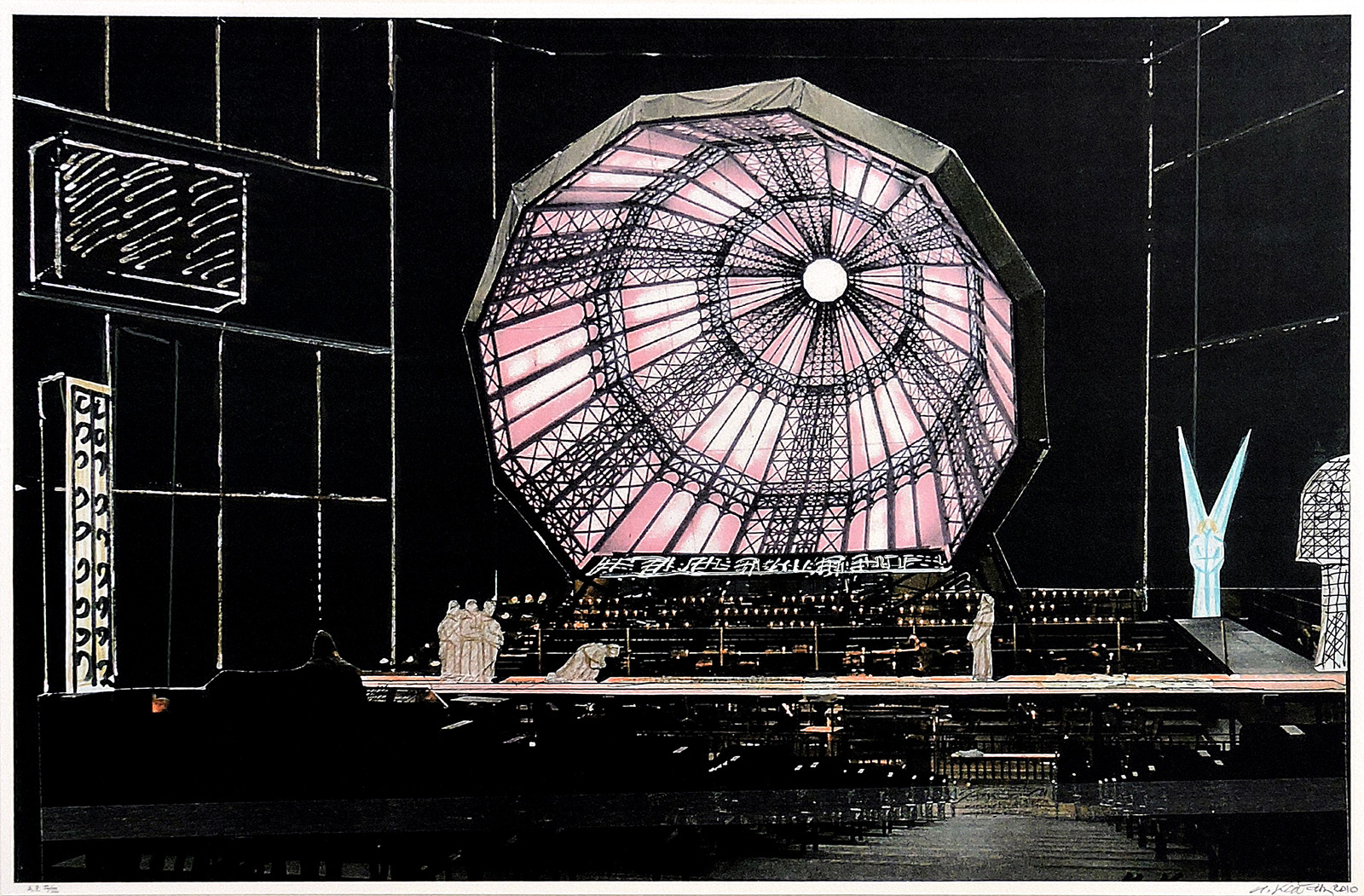Cupola
with Emilia Kabakov
YEAR: 2003
CATALOGUE NUMBER: 169
PROVENANCE
Collection of Ilya and Emilia Kabakov.
NOTES
See CRI, vol. 3, no. 193, pp. 366–387.
See CRB, no. 126, pp. 494–497.
EXHIBITIONS
Ruhrtriennale, Jahrhunderthalle, Bochum, Germany
Saint François d’Assise (Saint Francis of Assisi), opera by Olivier Messiaen, September 13, 20, 24, 27, 2003.
Madrid Arena (organized by Teatro Real / Royal Opera, Madrid), Spain
Saint François d’Assise (Saint Francis of Assisi), opera by Olivier Messiaen, July 6, 8, 10, 11, 13, 2011.
Grand Palais, Paris, France
Ilya et Emilia Kabakov: L’Etrange Cité (Ilya and Emilia Kabakov: The Strange City), Monumenta 2014 (organization: Réunion des Musées Nationaux with support of the Ministry of Culture and Communication), May 10 to June 22, 2014.
CONCEPT OF THE INSTALLATION
The first thing that the viewer encounters upon entering the Grand Palais is a large cupola (14 meters in diameter) that is leaning toward the entrance gates to the city. Inside the cupola resembles a rosette in a Catholic cathedral: in the center, in the depths of the cupola, there is a white aperture from which colored “rays” emanate radially in all directions. The coloring of these “rays” changes, in infinite variations, in consort with the music playing in the cupola. The cupola is constructed according to the principles of the great Scriabin about the connection between music and color, so-called “color-music.” In addition to this, there is a thin ray of light streaming from the center of the cupola which, being reflected back from the upper part of the gates into the city, flows upward again and ignites a magical “star” hanging motionless above the center of the city.
Moreover, there are other roles for the cupola:
The center for the whole composition of the space and, at the same time, the main “character” will be the “Cupola” with a diameter of 13 meters. This cupola can have different functions depending on the media presented in the theater.
a) There could be musical concerts: classical, religious, experimental, vocal, jazz, etc.
b) The site can function as a visual supplement to shows and theatrical performances.
c) It could function as a lighting decoration to the different experimental performances, ballet, etc.
d) It could be used for children’s shows for Christmas or just as a light/sound performance.
e) It could be used for sporting events, fashion shows, design shows, etc.
The special quality of the “Cupola” is that it can function differently depending on the lighting conditions—it does function in daylight and nightlight. Also, it can serve as a site for exhibitions. Considering all of this, it is a “Gesamtkunstwerk” that unites visual, musical and performance art, and it can be related back to the experimental utopian projects of the beginning of the twentieth century (E. Piscator, E. Grieg, etc.).
Images
Literature















